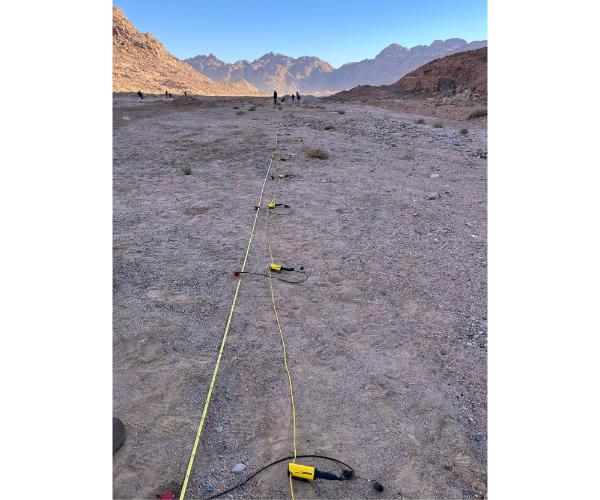Seismic: Basics and Geotechnical Applications

About Course
Seismic surveys are widely used for geotechnical and engineering purposes. This module covers the fundamentals of the seismic refraction and reflection techniques, including data acquisition, processing, and interpretation methods. The application of the seismic methods to address geological and geotechnical problems is also discussed.
Period:
• Six weeks (condensed module)
• Twelve weeks (full module)
Contents:
• Seismic Exploration: Fundamental Considerations
o Seismic Waves and Wave Propagation
o Wave Terminology
o Elastic Coefficients
o Seismic Waves
o Seismic Wave Velocities
• Rag Paths in Layered Materials
o Huygens’ Principle
o Fermat’s Principle
o Reflection
o Refraction
o Snell’s Law
o Critical Refraction
o Diffraction
o Wave Arrivals at the Surface
• Wave Attenuation and Amplitude
o Spherical Spreading
o Absorption
o Energy Partitioning
• Energy Sources
o Source Types
o Source Considerations
• Seismic Equipment
o Signal Detection
o Signal Conditioning
o Signal Recording
• Seismic Exploration: The Refraction Method
• A Single Subsurface Interface
o Derivation of a Travel-Time Equation
o Analysis of Arrival Times
o Determining Thickness
o Crossover Distance
o Critical Distance
o Constructing a Travel-Time Curve from a Field Seismogram
o Using REFRACT
o The Mohorovicic Discontinuity
• Two Horizontal Interfaces
o Derivation of a Travel-Time Equation
o Determining Thickness
o Critical Distance
o Analyzing a Second Field Seismogram
• Multiple Interfaces
• Dipping Interfaces
o Analyzing the Problem
o Derivation of a Travel-Time Equation
o Determining Thickness
• Multiple Dipping Interfaces
o Travel-Time Equation
o Analyzing Field Seismograms
• The Nonideal Subsurface
o Hidden Zones: The Low-Velocity Layer
o Hidden Zones: The Thin Layer
o Laterally Varying Velocity
o Interface Discontinuities
• The Delay-Time Method
• Field Procedures
o Site Selection and Planning Considerations
o Equipment Considerations
o Geophone Spread Geometries and Placements
o Corrections to Data
• Applications Using Seismic Refraction
• Seismic Exploration: The Reflection Method
• A Single Subsurface Interface
o Derivation of a Travel-Time Equation
o Analysis of Arrival Times
o Normal Move-Out
o Determining Velocity and Thickness
o Applying the x2 — t2 Method to a Field Seismogram
• Multiple Horizontal Interfaces
o The Dix Equation
o Determining Velocities
o Determining Thicknesses
o Further Discussion of the Dix Method
o Analyzing a Field Seismogram Containing Multiple Reflections
• Dipping Interface
o Derivation of a Travel-Time Equation
o Determining Dip, Thickness, and Velocity
• Acquiring and Recognizing Reflections from Shallow Interfaces
o The Optimum Window
o Multiple Reflections
o Diffractions
• Common Field Procedures
o Equipment Considerations
o Geophone Spreads
o Split Spread
o Common Offset
o Common Depth Point
• Computer Processing of Reflection Data
o The Static Correction
o Correcting for Normal Move-Out
o Velocity Analysis
o Stacking CDP Gathers
o Migration
o Waveform Adjustments
o Seismic Sections: Time Sections and Depth Sections
• Applications and case studies
Participants will develop field and software-oriented skills on how to:
• Conduct seismic refection and reflection surveys in the field.
• Process and visualize seismic data.
• Interpret seismic data.
• Use seismic surveys to address different geological and geotechnical problems.
Student Ratings & Reviews
No Review Yet
Details
- category
- October 22, 2024 Last Updated
